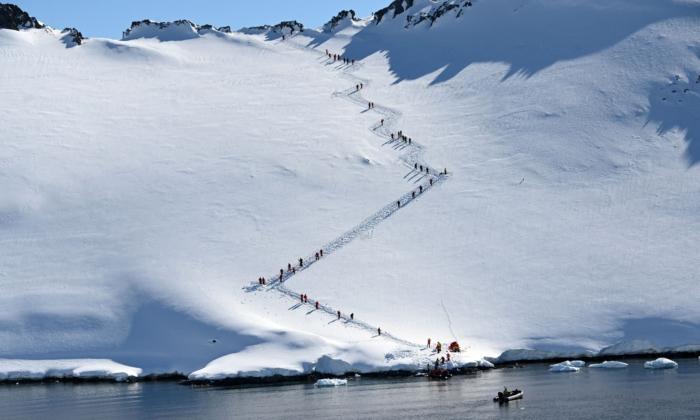Deep-diving robots will venture kilometres under the Southern Ocean’s surface to determine how it is holding up in the face of climate change in the Commonwealth Scientific and Industrial Research Organisation (CSIRO) Investigator’s longest ever voyage.
The 10-year-old research vessel on Jan. 5 set off on a 9260km round-trip journey, which was due to take it about 2300km from Hobart to the Southern Ocean and sea-ice edge before it returns to Fremantle in Western Australia in early March.
The 60-day venture—led by scientists from the Australian Antarctic Program Partnership and CSIRO—was intended to investigate why deep ocean currents near Antarctica were slowing down and whether the Southern Ocean would continue to absorb heat and carbon dioxide.
Meltwater from the Antarctic Ice Sheet was reducing the amount of dense water sinking to the deep ocean around Antarctica, co-chief scientist Annie Foppert said.
That slowed down currents that controlled the climate and determined how heat, carbon and nutrients were spread around the globe.
The Southern Ocean has acted as a “climate shock absorber” but researchers had to explore its depths to see whether that would continue to be the case, Dr. Foppert said.
Scientists on the 60-day voyage would compare the data they collected with earlier information to see how the Southern Ocean was changing and what that meant for the climate and sea level rise.
“To track these changes in the deep ocean, we will deploy a dozen deep-diving robots,” Dr. Foppert said.
“These new floats, able to collect measurements down to six kilometres below the sea surface, will allow us to track how the ocean is changing for the next five years by profiling the full depth of the ocean.
“A key question is whether the Southern Ocean will continue to remove large amounts of our heat and carbon from the atmosphere, or will the Southern Ocean ’sink' become less effective as the climate warms.”
Changes in the Southern Ocean influenced the rate of climate change, the productivity of Antarctica’s ecosystem and the future of the Antarctic Ice Sheet, which would affect rising sea levels, scientists said.
Researchers on board the Investigator also intended to study gases and particles released by “phytoplankton”—marine organisms—as they grew in aquariums mounted on the ship’s deck.
The scientists on that project, hailing from the Bureau of Meteorology and the University of Tasmania, wanted to see how effectively gases and particles released by the phytoplankton acted as “seeds” for new clouds.
How clouds formed over the Southern Ocean was still a blind spot for climate science, researcher Marc Mallet suggested.
“Improved understanding of cloud formation in the region will provide the foundation for more skilful weather and climate projections for Australia and the rest of the globe,” Dr. Mallet said.
Co-chief scientist Steve Rintoul said researchers had to look at the region as a whole—from the deep sea to low-lying clouds—to understand how the Southern Ocean affected the climate.
The voyage is known as MISO, standing for Multidisciplinary Investigations of the Southern Ocean.







